Steps to Review a Layering Event
FOUND IN: Order Based Manipulation
To detect layering, Surveyor looks for six conditions to be met. Surveyor walks you through a layering event in 6 steps in the plain English story panel on the left hand side of the screen. We’ll use the example below to show each step of how to review a layering event.
1 . Order Book Concentration
Condition 1: the subject user account is responsible for a significant percentage of the visible market-wide order book on one side of the market.
Along with appearing under Condition 1 in the story panel, you can see this shown in the Graph and in the Order Book table.
In the graph, arrows pointing to the right represent orders (green for buy, red for sell), and in this example they are green. In the graph in the middle of the screen, you can use your liquidity curves to visualize the percentage of the market the user represents (green for buy orders, red for sell orders). The orders are also shown in the detachable Order Book table and Local Order table.
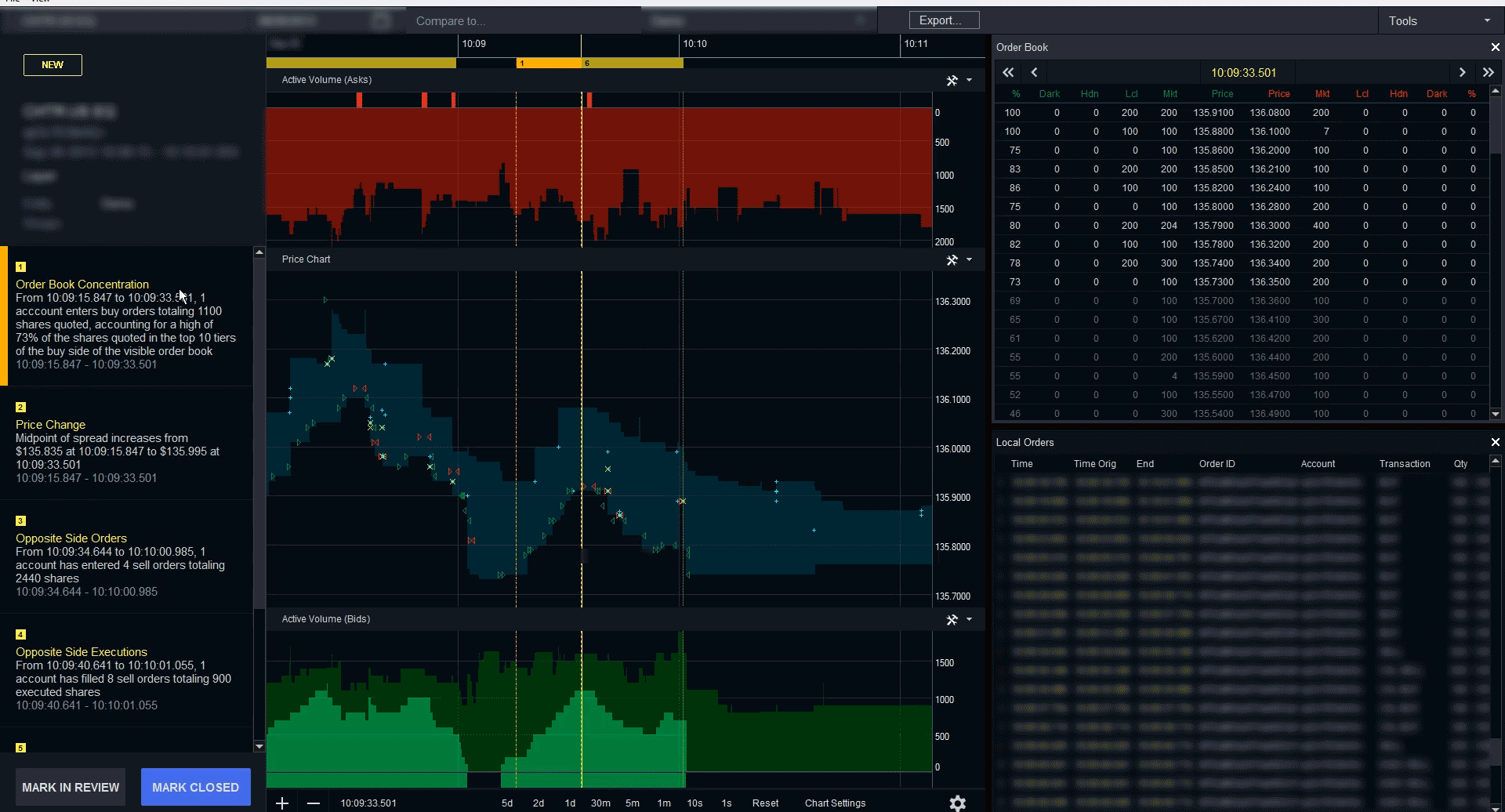
2. Price Change
Condition 2: The market-wide price of the instrument moves in a direction correlating to the user account’s order pressure (up for buy pressure, down for sell pressure).
In this example, the order book spread increases as more local orders are added to the order book.
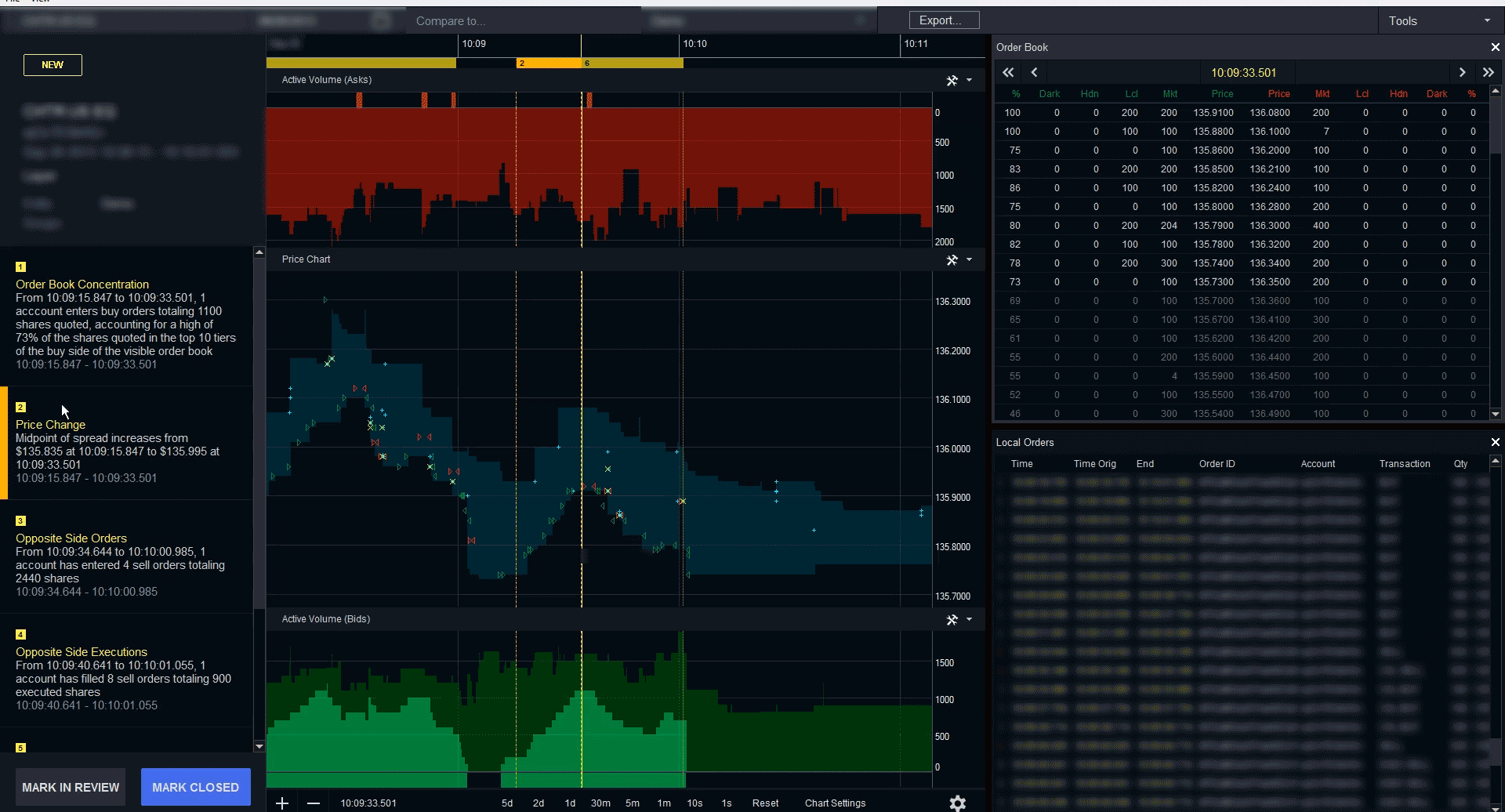
3. Opposite Side Orders
Condition 3: The same user account attempts to capitalize on the price movement by entering one or more orders on the opposite side of the market for the same, or for an economically correlated, instrument.
The red arrows pointing to the right represent sell orders in the example below.
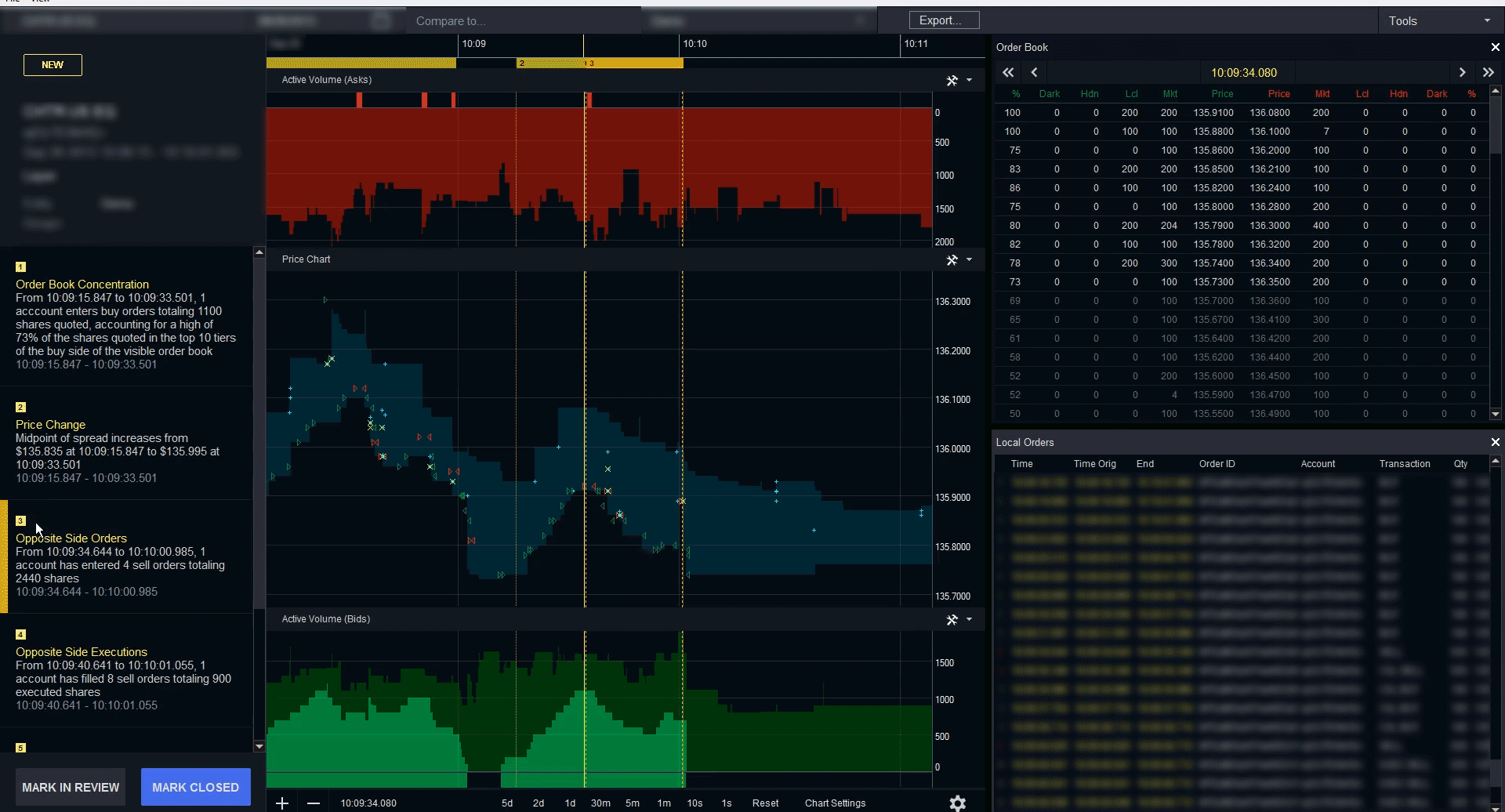
4. Opposite Side Executions
Condition 4: Orders are filled on the opposite side of the market for the same, or for an economically correlated, instrument.
The yellow Xes in the graph represent an executed trade.
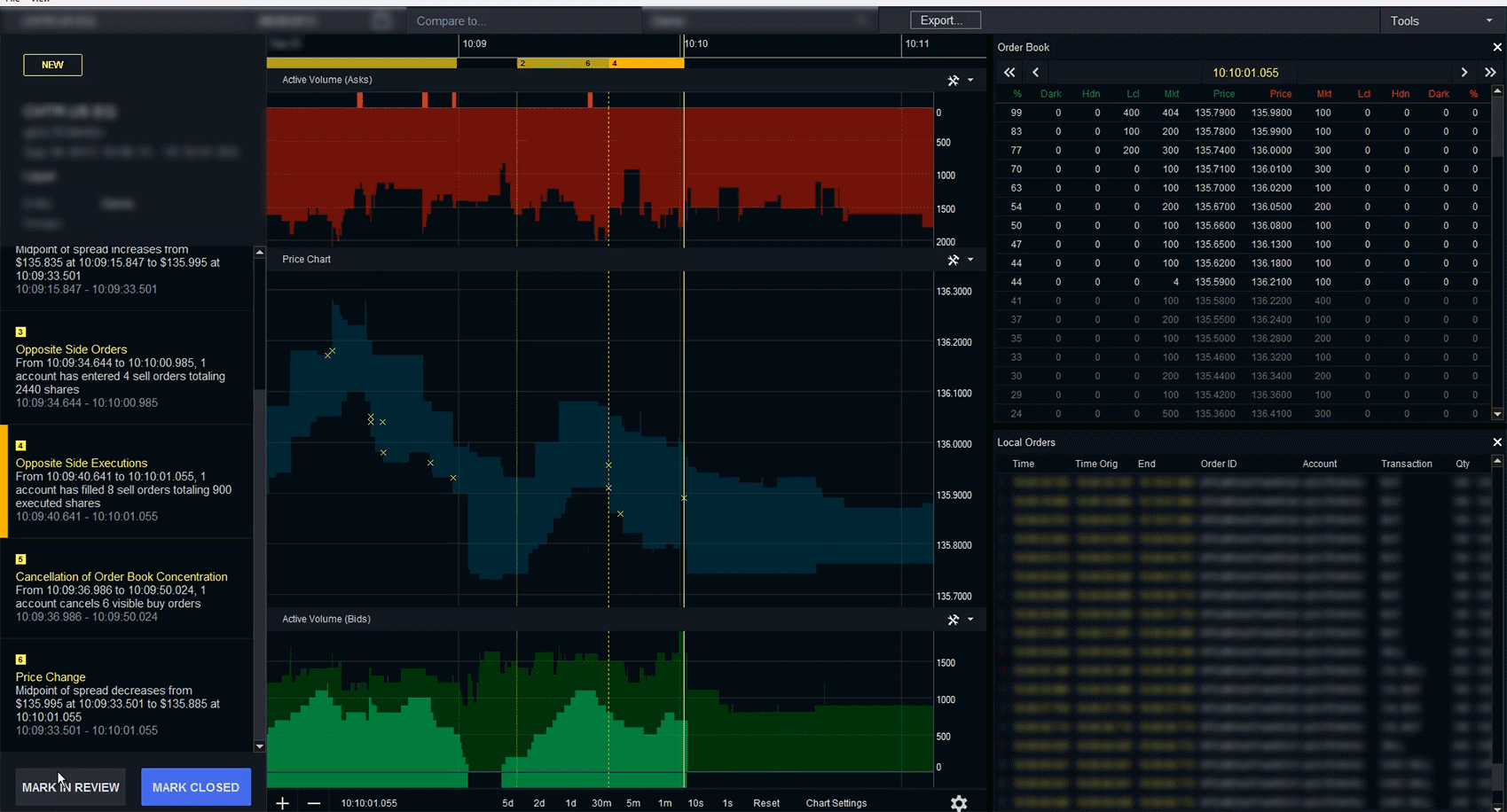
5. Cancellation of Order Book Concentration
Condition 5: Orders are canceled on the original side of the market (where concentration was in Condition 1).
Arrows pointed left represent order cancellations (green for cancel buy, red for cancel sell).
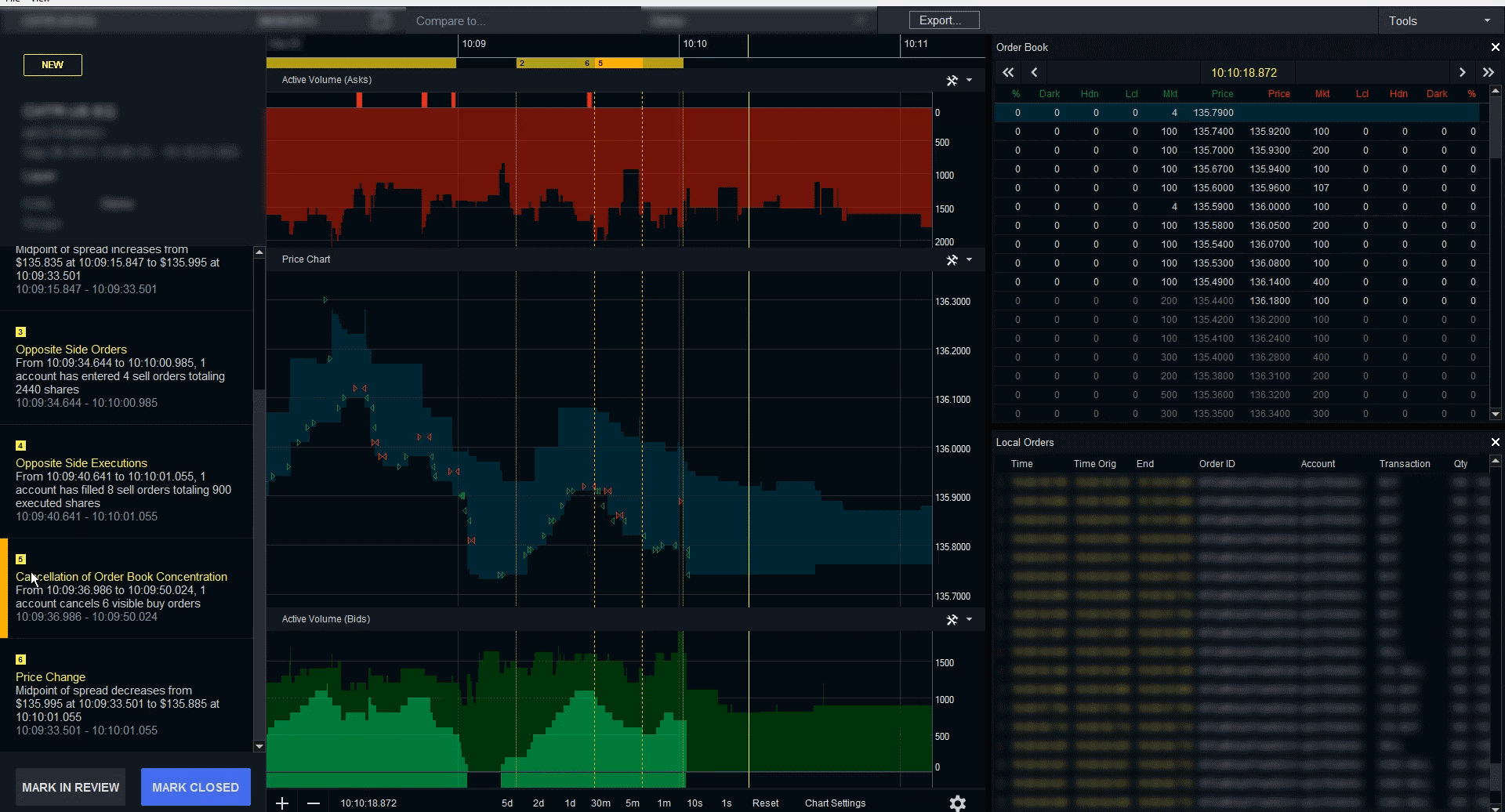
6. Price Change
Condition 6: The spread for the instrument reverts to its pre-concentration price levels, signaling the subject account was responsible for the price movement.
In the example below, note this being represented by the spread layer declining to the right.
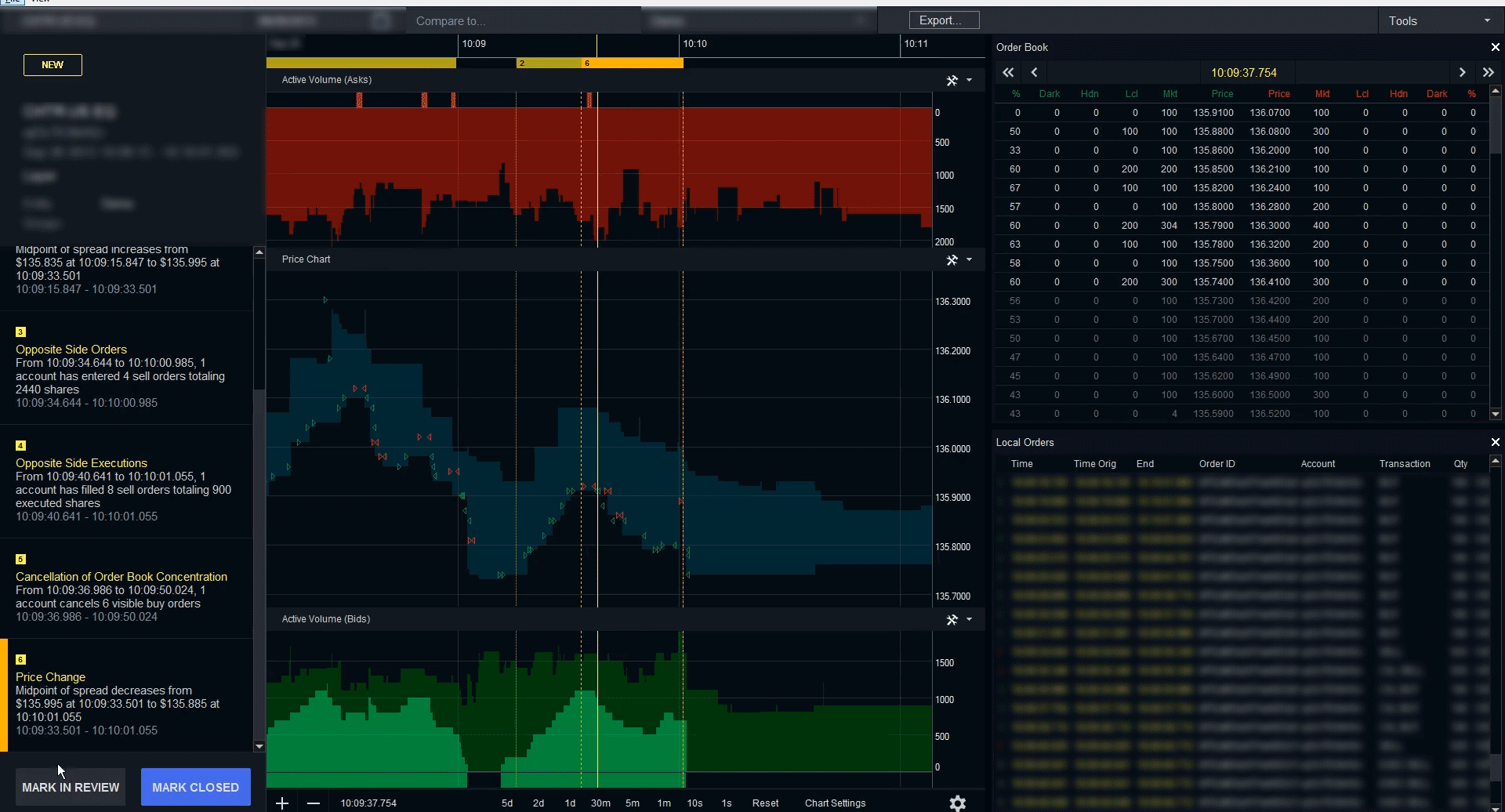
Using the Results
After reviewing the event, you can add a note to the event, and export the event to the responsible parties.
More on Reviewing Events
Next, see how to review a spoofing event. For more information about what layering is and further reading and analysis, visit our in-depth article.